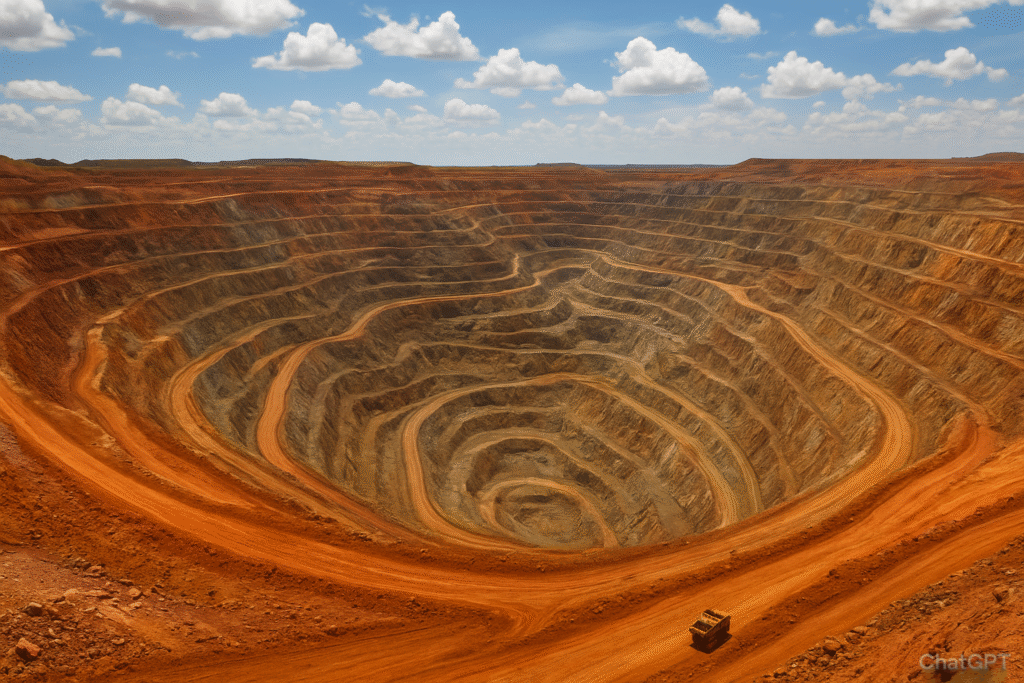Mining has played a significant role in Michigan’s economy for over 150 years, especially in the Upper Peninsula. The state produces a variety of minerals, including copper, iron ore, gypsum, and construction materials. Michigan remains a key player in the nonfuel mineral industry, contributing over 3% of the U.S. total mineral production value.
The region’s mining history is rich, with once-booming towns built around copper and iron ore mines. Today, mining is evolving with projects like the Copperwood mine, which aim to balance economic benefits and environmental concerns. Various types of mining, including metallic and gem mining, continue to attract both industry professionals and outdoor enthusiasts.
Mining in Michigan is not only about extraction but also about sustaining communities and local economies. It combines a legacy of industrial growth with ongoing efforts to manage natural resources responsibly, making it a complex and important part of the state’s identity.
History and Overview of Mining in Michigan
Mining in Michigan has a long and varied history, starting with early indigenous copper mining and expanding into major iron and copper industries by the 19th century. The state’s mining activities include deep mine shafts, open pits, and industrial advancements, concentrated in distinct geographical regions.
Early Mining Activities
Indigenous Peoples in Michigan were mining native copper as early as 3000 B.C., primarily on the Keweenaw Peninsula. They extracted copper directly from surface deposits, using crude tools for early metalworking. This prehistoric mining focused mainly on native copper nodules found on the surface or just below it.
By the 19th century, evidence of these ancient diggings guided European American miners. Mining transformed from small-scale extraction to mechanized operations. Early 1840s mining efforts began to explore these prehistoric workings, marking the start of Michigan’s modern mining era.
Development of Iron and Copper Mining
Copper mining became a major industry after the Civil War, with significant expansion through the late 1800s. By the mid-19th century, steam-powered equipment, like the 45-ton steam engine at Cliff Mine in 1852, enabled deeper and more efficient extraction.
Iron mining grew rapidly from around 1845 when the Marquette Range opened. Iron and copper mines both used vertical shafts ranging from 100 to over 3,000 feet deep. Mining techniques became more industrialized by the 1880s with conglomerate lodes and amygdaloidal rocks targeted for extensive copper extraction.
Major Mining Regions
The Keweenaw Peninsula is Michigan’s premier copper mining region, renowned for its extensive prehistoric and industrial copper deposits. It produced more copper than any other U.S. state between 1847 and 1887.
The Marquette Range and Gogebic Range are important iron mining areas. Negaunee, home to the Carp River Forge opened in 1847, served as an early hub for iron processing. These regions were the center of iron ore extraction and contributed heavily to Michigan’s mining output during the 19th century.
| Region | Mineral Focus | Key Features |
| Keweenaw Peninsula | Copper | Ancient mining sites, large deposits |
| Marquette Range | Iron | Early iron mines and deep shafts |
| Gogebic Range | Iron | Extensive mining and industrial activity |
Current Mining Industry and Economic Impact
Michigan’s mining sector remains a significant contributor to the state’s economy, with ongoing projects focused on critical minerals essential for industries such as steelmaking and clean energy. Regulatory frameworks and environmental challenges shape mining operations, while workforce dynamics influence economic outcomes. Emerging trends suggest a cautious but active future for mining in the region.
Active Mines and Key Minerals
Michigan hosts several active mining operations, primarily focused on copper, nickel, and iron ore. It stands out as the only U.S. state producing nickel, with approximately 18,000 metric tons of nickel concentrate produced in 2022. Copper mining, particularly in the Upper Peninsula, continues to draw investment despite public concerns.
Iron ore mining supports the steel industry, maintaining Michigan’s historical role in metal production. Sand dune and coal mining also persist but on a smaller scale. The state’s mining output contributes about $1 billion annually to Michigan’s GDP.
Regulations and Environmental Considerations
Mining activities in Michigan are tightly regulated by the state’s Geologic Resources Management Division. These regulations cover ore transportation, waste management, and reclamation plans. Additional oversight comes from other state and federal agencies to monitor environmental impacts.
Concerns remain over potential damage to wildlife, water quality, and local tourism economies, especially related to new mine proposals. Recent budget decisions reflect environmental caution, such as the removal of $50 million in funding for a controversial copper mine project in the Upper Peninsula.
Workforce and Employment
The mining sector directly employs over 14,000 workers in Michigan, with thousands more in supporting roles like transportation and equipment services. High-paying jobs in mining average between $80,000 and $120,000 annually, particularly in copper and nickel operations.
Indirect and induced employment pushes total job impact to more than 50,000 statewide. This workforce sustains many rural communities, especially in Michigan’s Upper Peninsula, where mining remains a central economic driver.
Future Trends in Michigan Mining
Michigan’s mining future is tied closely to demand for minerals critical to clean energy technologies. Companies continue to explore new deposits of copper and nickel to support electric vehicle and battery production.
However, public opposition and environmental scrutiny could slow expansion plans. Economic development agencies weigh investment benefits against risks, making future funding for mining projects uncertain.
The industry is also seeing a shift toward stricter environmental standards and sustainable mining practices to address ecological concerns raised by local communities.



